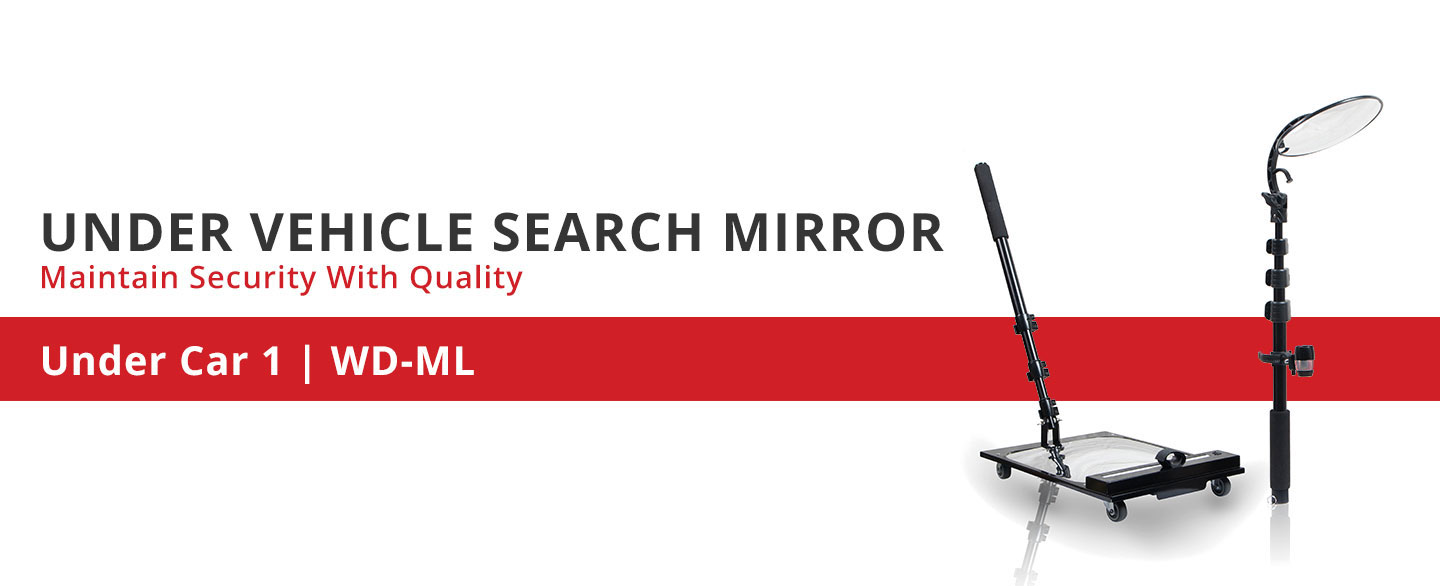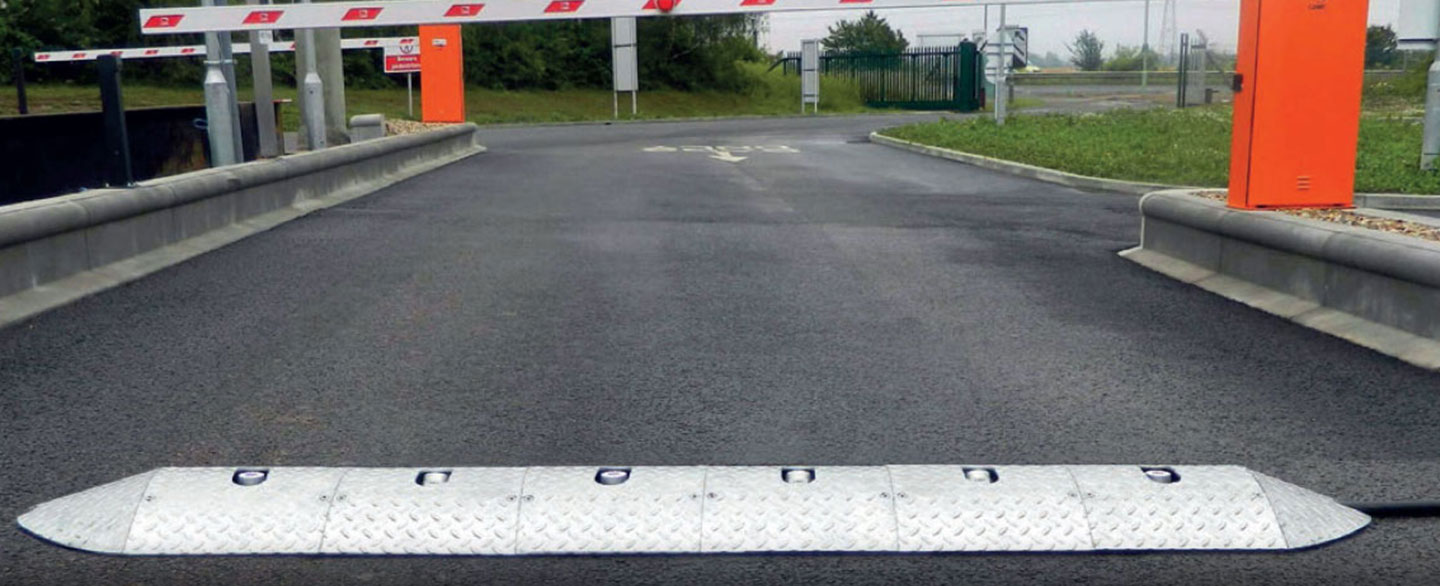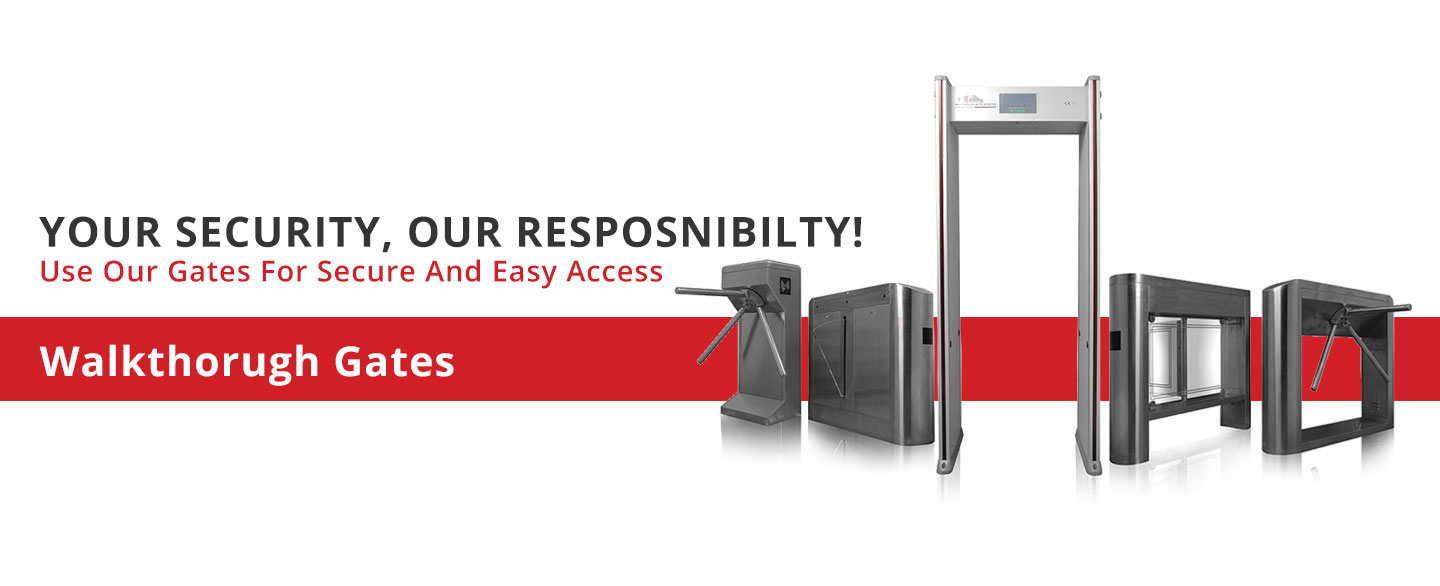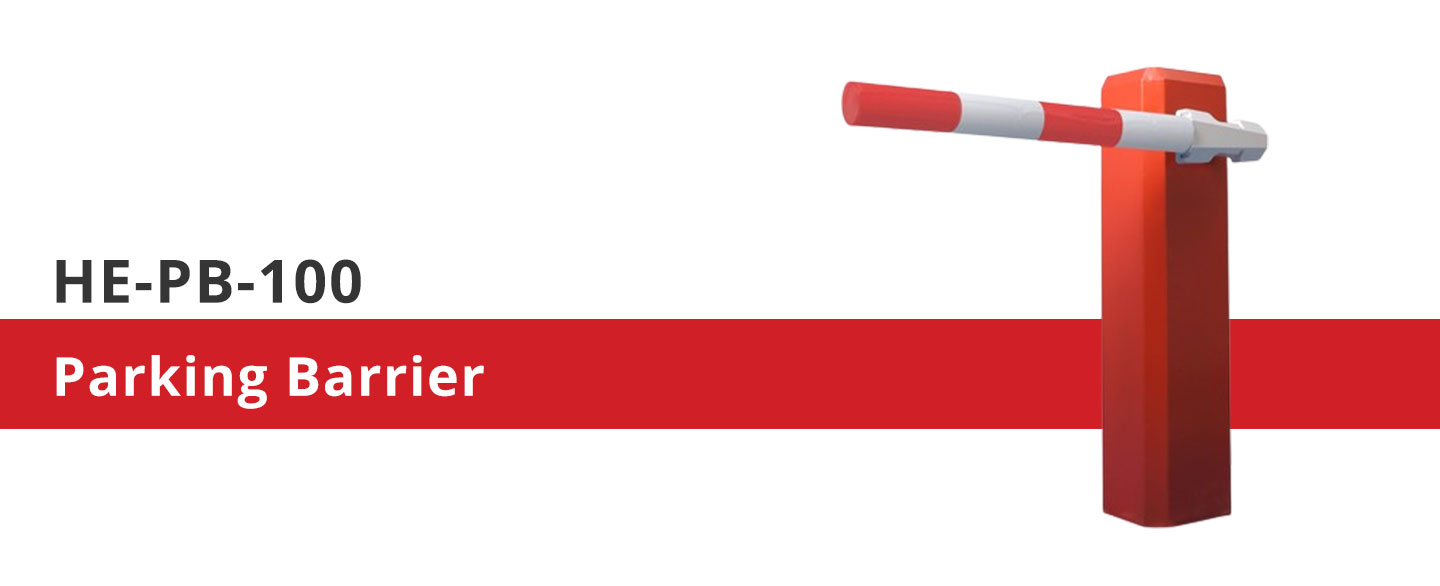Advantages Of Waist Height Turnstile Gates
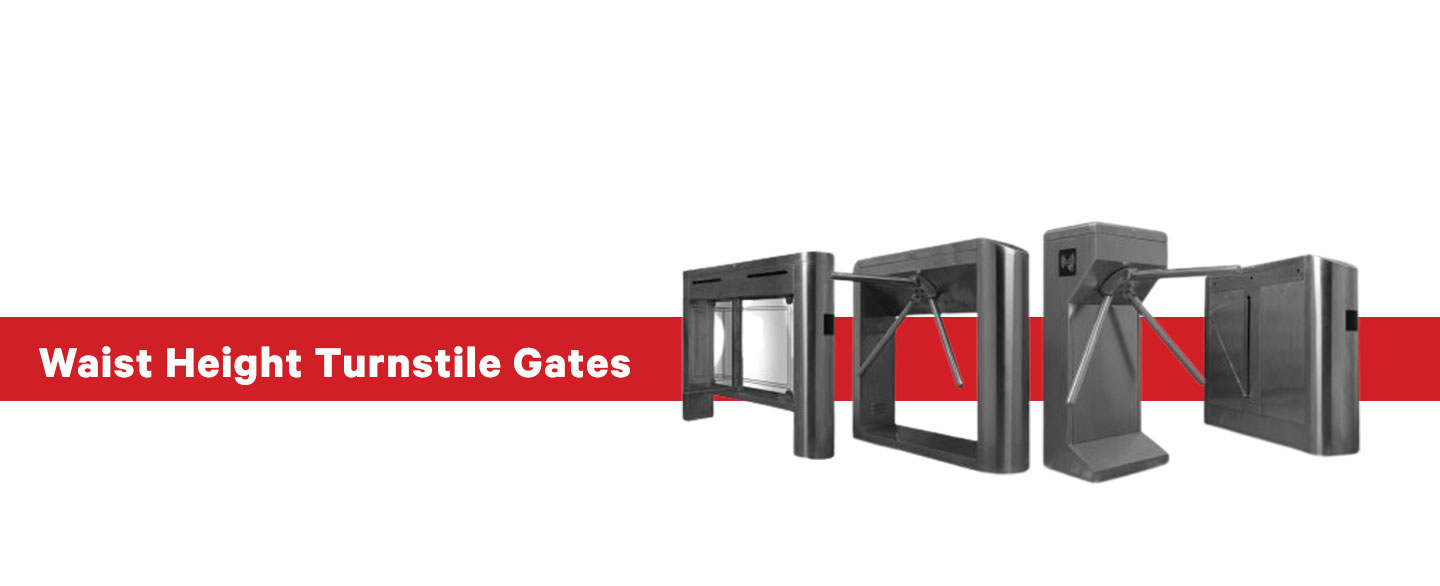
Waist Height Turnstile Gates
Waist Height Turnstile Definition
Waist-Height turnstiles, or tripod turnstiles, are three-arm turnstiles that sit at waist height. They are developed for access control into or out of a point of entry by only allowing a single person access at a time. These solid turnstiles are very common and are used for a variety of projects.
Waist Height Turnstile Variations
Waist-Height turnstiles vary in finish, body, and functionality. They can have sleek stainless steel or solid powder-coated finishes. These turnstiles can lock on entry or exit, and can even rotate freely.
Waist Height Turnstile Applications
A waist-height turnstile is used when access control is desired but full-height security is not required. These turnstiles tend to look more alluring than full-height turnstiles, so they are often used in customer service environments and at stadiums, sports, and entertainment venues. Waist-height turnstiles are a great solution for managing entry without seeming too intense.
Features:
Stable operation, no noise, and mechanical impact. The number of passengers can be set. Several mold processing methods for you to choose Bi-direction one direction allowed, one forbidden, or one direction charging, one free. All working molds are set by buttons on the main control board The falling beam and the hanging beam can be controlled over a long distance to meet the special requirements of users and fire protection requirements. The direction indicator light tells you the direction to go on the turnstile.
Standard electrical interface, communication interface, relay interface, and level interface linked with various reading and writing devices. All functions are realized on one all-in-one computer, which is controlled and managed remotely by a computer It can automatically count the number of passers-by, and an LED display Cuts off the power supply to lift the beam. When the power is on, the arm will rise automatically and stop when encountering obstacles, The function with or without a card, reader memory can be set according to your needs. Operation self-check the alarm.
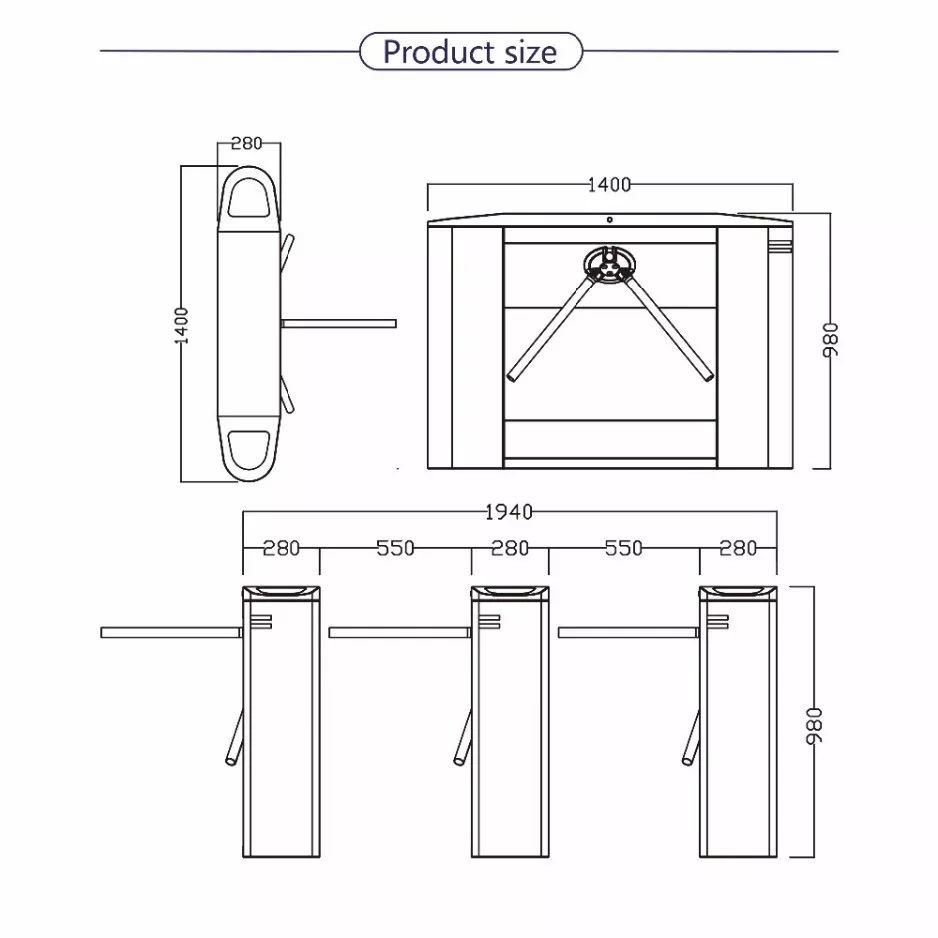
Turnstile Gate Size
Turnstile Gate Dimensions
Turnstile gate dimensions usually relates to the size of the turnstile gate chassis. We can customize turnstile gate dimensions according to your needs. If you want customize option in turnstile gate’s dimensions, you can contact us.
The intelligent turnstile gate is mostly used in the construction of public transportation, government construction, enterprise construction, public place construction, residential construction, other construction, and so on. We are constantly breaking through the industry arc difficulties and domestic material surface treatment difficulties and working hard on the gate structure, appearance, and function of the gate to meet the personalized user requirements.
The chassis of the turnstile gate is to protect the internal components such as the mechanism, control module, and other internal components. It can also play a supporting and aesthetic role. The main material is usually stainless steel, and the auxiliary materials include plexiglass, toughened glass, resin, stone, or wood. Generally, the material selection should be firm, not easy to deform, scratch-resistant, rust-proof, corrosion-resistant, and easy to process.
The structure and general turnstile gate dimensions design of the pedestrian access control the turnstile gate’s chassis is not regular. Generally, turnstile gate dimensions with the same style are designed for different events.
Chassis Structure
Industry Factors
Unique shape, large area, many special radians, various types of customers request, unable to adopt the batch mode of mold opening.
Processing Methods
Opening, bending, cutting, welding assembly, grinding, and surface treatment. Factors to be considered: the material is easy to deform, the movement fits well.
Contents: movement Fixing frame, testing module mounting frame, maintenance door, control module installation, wiring function, display module installation, chassis fixing. Channel size design of turnstile gate Security turnstile gate channel size should be in line with human use habits:
The height of the device is about 1000mm, and the card swiping position is under the forehand of the device or the height of the right hand raised. The width of large luggage carried by individuals and not carried is 510-650mm, 800-900mm Width required for bicycles and motorcycles: is 1000-1200mm the maximum width of the equipment Chassis is 300 mm
Cylinder diameter: 168mm, 127 mm
For example, The channel size of the tripod turnstile door is designed to be 520mm The channel size of the cylindrical swing turnstile gate is 550mm. The channel size of The bicycle swing turnstile passage is 1300 mm, of course, this size can be adjusted and designed according to the requirements of the situation.
The channel size of the indoor swing turnstile gate is designed for 900 mm. The channel size of the flap barrier turnstile gate is 600 mm. The channel size of the full-height turnstile is about 550 mm. Most turnstile gate chassis are made of stainless steels. The use environment of the turnstile gate is very diverse. It can be reused indoors and outdoors, such as at the school gate, open parking lot and subway station, etc.
Stainless steel is not always rust, this is not absolute, but compared with other metal materials, stainless steel is not easy to rust. We usually call stainless steel which is used to it, the full name of stainless steel is called: stainless acid-resistant steel because it has a relatively large content of chromium and nickel, so stainless steel has rust resistance to weak corrosive media such as air, steam, water, and so on.
That is to say, if we compared with other metal materials, such as iron, as soon as it is stained with rain, it will rust. The standard outdoor service life of stainless steel is 10 years. Stainless steel is a common material in stainless steel, with a density of 7,93 g/cm³, which is also called 18 / 8 stainless steel in the industry. It is a kind of food-grade stainless steel with high-temperature resistance of 800℃, good processability, and high toughness.
In addition to kitchen products,304 stainless steel products are also very versatile and widely used in the industrial and home decoration industry and food and medical industry, such as for the production of equipment and parts requiring good corrosion resistance and molding. To maintain the inherent corrosion resistance of 304 stainless steel, the steel must contain more than 18% chromium and more than 8% nickel. Although the chassis we make has many advantages, we still should pay attention to the usual use of the process of maintenance.
The Maintenance Of Turnstile Gate Chassis
At present, the use of access control pedestrian turnstile gates is very common. The subway, community, factory, and other places are very popular, so what is the maintenance method of the stainless steel chassis of the turnstile gate machine? I hope the next brief section can help you. Although stainless steel has good corrosion resistance, it will eventually be oxidized if exposed to a corrosive environment.
When cleaning the stainless steel surface, care must be taken not to scratch the surface, and avoid using detergent, steel balls, and grinding tools containing bleaching components and abrasives. To remove the washing liquid, clean water should be used to wash the surface at the end of the washing. Stainless steel surface dust and easy-to-remove dirt can be soap, weak detergent, or warm water washing.
The trademark and film on the surface of stainless steel should be washed with warm water and weak detergent. The adhesive composition should be alcohol or organic solvent (ether, benzene) to wipe the grease, oil, and lubricating oil pollution on the surface of stainless steel. After cleaning with a soft cloth, neutral detergent, ammonia solution or special detergent should be used.

The Stainless Steel
The surface has bleach agent and all kinds of acid adhesion, which should immediately wash with water, and then use an ammonia solution or neutral carbonated soda water the solution to soak, use neutral detergent or warm water to wash. There are rainbow patterns on the surface of stainless steel, which is usually caused by excessive use of detergent or oil. Warm water and neutral detergent can be used to wash away the surface. Rust caused by dirt on the surface of stainless steel can be washed with 10% nitric acid or grinding detergent, or with a special detergent.
As long as we use the correct maintenance method, we can extend the service life of stainless steel and keep the stainless steel clean, bright, and gorgeous appearance. There are many designs of turnstile gate dimensions for the pedestrian access control turnstile gate chassis, which will not be listed here. Users who need it can communicate with us according to the specific actual project requirements.
As a professional turnstile manufacturer, and turnstile gate supplier, provide high-quality all kinds of turnstile gate. We can also customize the turnstile gate dimensions according to your requirements. We aim to provide high-quality products and the best service. All of our products get 2 years warranty. If there is an exception or technical support during the use of the full-height turnstile gate, please contact us, We will offer you the most satisfactory reply and provide the best service.
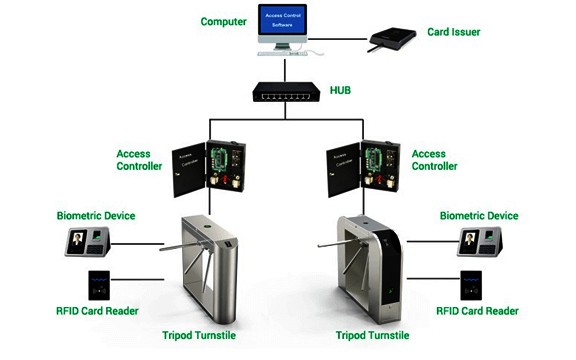
How Turnstile Works?
A turnstile is a mechanical gate, designed to only allow one person to pass through at a time. A turnstile or “baffle gate” consists of revolving horizontal arms that are fixed to a vertical pole. These super smart gates are typically used to reinforce a one-way stream of traffic or to deny entry to those who insert a coin, ticket, or pass of some kind.
Turnstiles often use ratchet mechanisms that only allow the stiles to rotate in one direction and not in the other. Typically turnstiles are designed to operate when a payment or pass is presented – only then can you turn the stile to enter. Turnstiles are a great, yet perhaps an underused tool for controlling access into buildings, arenas, or private property. The concept is ultimately simple – to create a gateway that only allows access in one direction.
In the city, crime rates have remained steady and the threat of intrusion is very real. This has forced business owners to tighten their security and increase access control.
Modern Turnstiles
Normally feature the most recent technology and materials, allowing them to operate effectively both outdoors and indoors. They are also designed to incorporate a variety of both safety and security features for maximum strength and durability.
Technology Has Advanced
So much over the past two decades, meaning that turnstiles are smarter and more reliable than ever. They can control the flow of traffic in certain areas, providing a consistent stream of traffic at a controlled rate.
Nowadays, turnstiles can be programmed to limit access – for example, staff can access certain areas whereas visitors cannot. They provide a physical deterrent, limiting those who wish to access an area without authorization.
What Are The Benefits Of Turnstiles?
Ideally, you want to ensure that your premises are safe and secure in every way – not only for your benefit but also for staff and visitors. Turnstile gates offer the best entrance control, by providing an accurate count of attendance – increasing overall security by efficiently isolating any potential trouble so that any illegal possessions can be confiscated.
Any establishment must be secure; the increase in unauthorized personnel has forced many businesses to invest in more security and access control systems. A turnstile is a smart way to control who enters and exits certain areas, identifying authorized personnel and visitors. Unlike security guards, a turnstile can work for 24 hours, 7 days a week without tiring or breaks. Installing turnstiles is a great way to monitor who enters and exits your building, eliminating potential security threats and limiting access to intruders.
Turnstile Barrier Gate
Turnstile, gate, and barrier systems provide effective & safe means for pedestrian flow control at entrances of manufacturing facilities, commercial buildings, schools & educational campuses, leisure stadiums, amusement parks, retail hopping outlets, etc.
Integrating gate, turnstile, and barrier hardware with our access control systems facilitates a level of security to meet even the most demanding client requirements. Turnstiles and gates can be installed together with matching barriers of different types. Thanks to the low power demand, the turnstiles are supplied with safe operating voltage. The internal turnstile options include the traditional mechanical arm type and the none invasive IR sensor type.
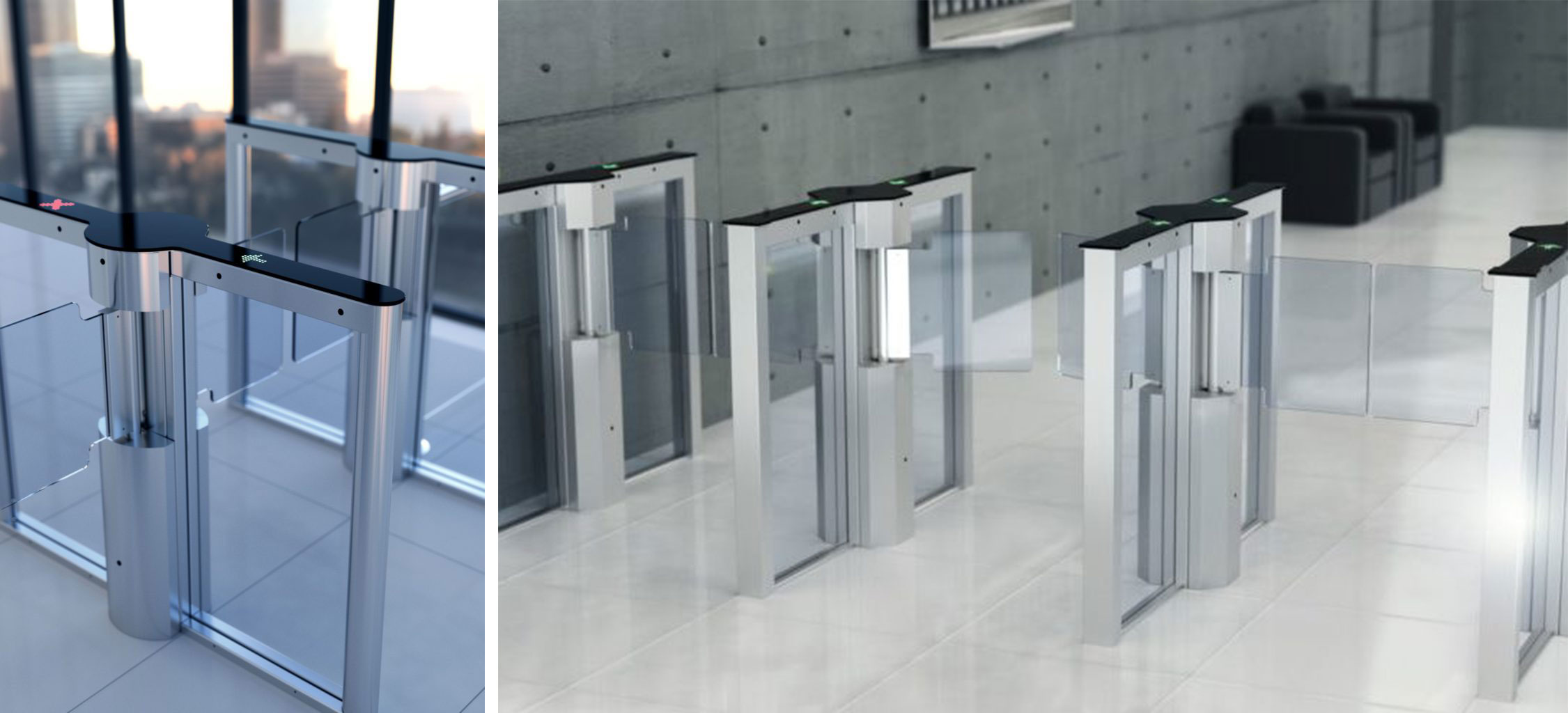
Turnstile Gate Access Control
Turnstile Access Control Definition
Turnstile access control refers to using turnstiles and gates to control entry into or exit of an area. Access may be controlled to allow one-way access or bi-directional access. A security turnstile gate, like a full-height or waist-high tripod turnstile controls access by allowing only one person to pass through its barriers at a time. Additionally, turnstile access control systems can be programmed so that different parameters can be set to determine who has access to an area and when. Further entry can be controlled by card readers and advanced biometric scanners to allow for autonomous operation.
Access Control Variations
There are various types of security turnstiles used for access control. Full height, tripod, and optical turnstiles along with ADA gates are all used to control access. They vary in level of security also, with optical turnstiles having the lowest level of security and full-height turnstiles having the highest. Access control turnstiles and gates can further vary based on appearance. Optical turnstiles have a high-quality appearance with their stainless steel construction and glass panes. On the other hand, full-height turnstiles have a rugged appearance that is best used to portray safety and impenetrability.
Turnstile Applications
Turnstile access control systems are used to restrict access, provide security, and control people's traffic. They bring orders to crowds exiting stadiums, amusement parks, and sporting events and provide security to high-risk areas like corporate lobbies, data centers, and construction sites. Finally, they are used to check credentials like tickets and authorization cards.


